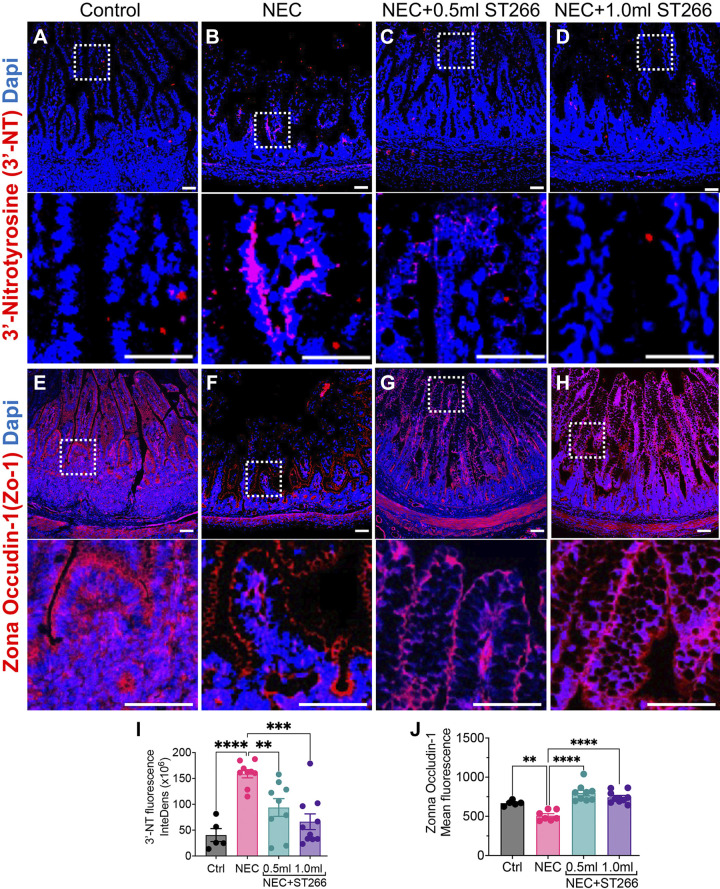Figure 4.
Administration of ST266 prevents small intestinal mucosal injury and loss of tight junctions in premature piglets induced to develop NEC. Immunofluorescence images of 3′-nitrotyrosine (3′-NT, red fluorescence) as an indicator of oxidative injury in small bowel of control (A), NEC (B), NEC piglets given 0.5-mL ST266 (C), and NEC piglets given 1.0-mL ST266 (D). Immunofluorescence images of Zona occludin-1 (Zo-1, red fluorescence) as an indicator of barrier integrity in small bowel of control (E), NEC (F), NEC piglets given 0.5-mL ST266 (G), and NEC piglets given 1.0-mL ST266 (H) via intraperitoneal route once daily at 10 AM on each day of the NEC model. Quantification of fluorescent intensity of 3′-NT staining (I) and Zo-1 (J) using the ImageJ software. Statistical significance was determined by one-way ANOVA followed by Tukey’s multiple comparisons tests using GraphPad Prism 9 software. **P < 0.01, *** or ****P < 0.001. Each dot on the graph represents a different piglet. Data were obtained from Ctrl (n = 5), NEC (n = 8), NEC + 0.5 mL ST266 (n = 9), and NEC + 1.0 mL ST266 (n = 10) piglets. Scale bars, 50 µm. NEC, necrotizing enterocolitis.

